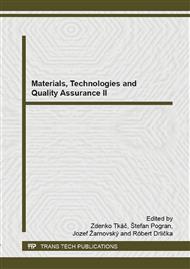p.67
p.75
p.83
p.91
p.99
p.105
p.111
p.119
p.127
Possible Solutions for Checking Particulate Matter Filters (DPF) in Motor Vehicles
Abstract:
Solid carbon (C) is produced during hydrocarbon fuels combustion by the molecules heat decomposition process in a local lack of oxygen. More reactive hydrogen consumed the part of oxygen in the zone of an oxygen-rich mixture, so carbon particles are not gaining access to oxygen. Solid carbon particles are bound to other various materials such as mechanical impurities, sulphates, condensates, and liquid fuel residues, some of them with high toxicity – such as polycyclic aromatic hydrocarbons (PAH). The cause of high solid carbon emissions is a significant inhomogeneity of the mixture up to the value λ = 0 inside the fuel droplets where oxygen absences up to λ = ∞ in the space where fuel does not even come. Therefore, solid carbon emissions highly depend on the quality of atomization of the fuel which is injected into the cylinder. The supply of oxygen required for oxidation is improved by increasing the total amount of the air in the cylinder. In Slovakia as well as in other countries (the Czech Republic, etc.), there have been recently multiple instances of removing catalysts from vehicles by services, deactivation of diesel particulate filters (DPF, SCR), or vehicle control units reprogramming (tuning), or a combination of the previous actions. From the perspective of a company and its interest, it is a large interference with vehicle design, and it also affects the relationship with the environment. From the perspective of society, it is irrelevant whether it is the individual's conduct or the conduct of certain groups. This article explores the possible solutions for checking the illegal diesel engines conversion due to deactivation of particulate matter filters in exhaust systems of diesel engines as well as the current legislation that covers this issue.
Info:
Periodical:
Pages:
119-125
Citation:
Online since:
December 2014
Authors:
Price:
Сopyright:
© 2014 Trans Tech Publications Ltd. All Rights Reserved
Share:
Citation:


